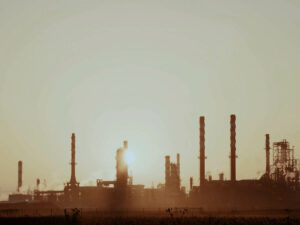
The different types of stack emission testing
Stack emission testing plays a crucial role in ensuring environmental compliance and monitoring the quality of air emissions from industrial sources. By conducting these tests, industries can identify and mitigate the release of harmful pollutants into the atmosphere.
Let’s explore the concept of this testing and find out what emissions are tested, below.
What is stack emission testing?
Stack emission testing, also known as stack testing or source testing, is a systematic process used to measure and analyse the pollutants emitted from industrial stacks or chimneys. The primary objective of this testing is to assess compliance with regulatory standards, evaluate the efficiency of pollution control equipment, and monitor the environmental impact of industrial activities.
During stack emission testing, specialised equipment is employed to measure various parameters, such as pollutant concentrations, flow rates, temperature, and velocity of the exhaust gases. These measurements help determine the quantity and composition of emissions, enabling accurate assessment of their impact on the environment and human health.
Different emissions that are tested
Stack emission testing encompasses a wide range of pollutants that are released into the atmosphere. Some of the common emissions that are tested include:
Particulate Matter (PM)
Particulate matter consists of tiny solid or liquid particles suspended in the air. Stack emission testing measures the concentration of PM, which can include dust, soot, and other fine particles that can be harmful when inhaled.
Volatile Organic Compounds (VOCs)
VOCs are carbon-based chemicals that readily vaporise at room temperature. Industries emitting VOCs, such as solvents and fuels, are subject to stack emission testing to ensure compliance with regulatory limits due to their contribution to air pollution and potential health risks.
Nitrogen Oxides (NOx)
NOx compounds, primarily nitrogen dioxide (NO2) and nitric oxide (NO), are produced during high-temperature combustion processes. Stack emission testing measures NOx levels to assess the efficiency of combustion systems and the environmental impact of industrial operations.
Sulfur Oxides (SOx)
SOx emissions are mainly produced by the burning of fossil fuels containing sulfur, such as coal and oil. Stack emission testing monitors SOx levels to evaluate compliance with emissions standards and the effectiveness of flue gas desulfurisation systems.
Stack emission testing with Apex Environmental
Apex Environmental is a leading provider of environmental services in South Africa. One of our core services is stack emission testing, which is used to measure the levels of air pollutants emitted from industrial sources. This testing is conducted using a variety of methods, depending on the pollutants being measured. Some common methods include:
Particulate matter (PM) sampling
This method is used to measure the number of fine particles in the air. PM can be harmful to human health, and it can also contribute to climate change.
Sulfur dioxide (SO2) sampling
This method is used to measure the amount of sulfur dioxide in the air. SO2 is a major contributor to acid rain, which can damage ecosystems and infrastructure.
Nitrogen oxide (NOx) sampling
This method is used to measure the amount of nitrogen oxides in the air. NOx is a major contributor to smog, which can cause respiratory problems.
The results of stack emission testing can be used to:
Comply with air quality regulations
Many industries are required to comply with strict air quality regulations. These tests can help to ensure that these regulations are being met.
Identify areas for improvement
The results of stack emission testing can be used to identify areas where emissions can be reduced. This can help to improve air quality and protect human health.
Develop emission inventories
Emission inventories are used to track the amount of air pollutants emitted from different sources. Stack emission testing can be used to collect data for these inventories.
This is a vital tool in monitoring and controlling industrial emissions. By accurately measuring and analysing various pollutants, industries can ensure compliance with regulatory standards, minimise environmental impact, and safeguard human health.
With Apex Environmental and our expertise and comprehensive stack emission testing service offerings, we can help your industry navigate the complex landscape of environmental compliance with confidence, promoting sustainable practices for a cleaner and healthier future. Contact Apex Environmental today to learn more about our services.








